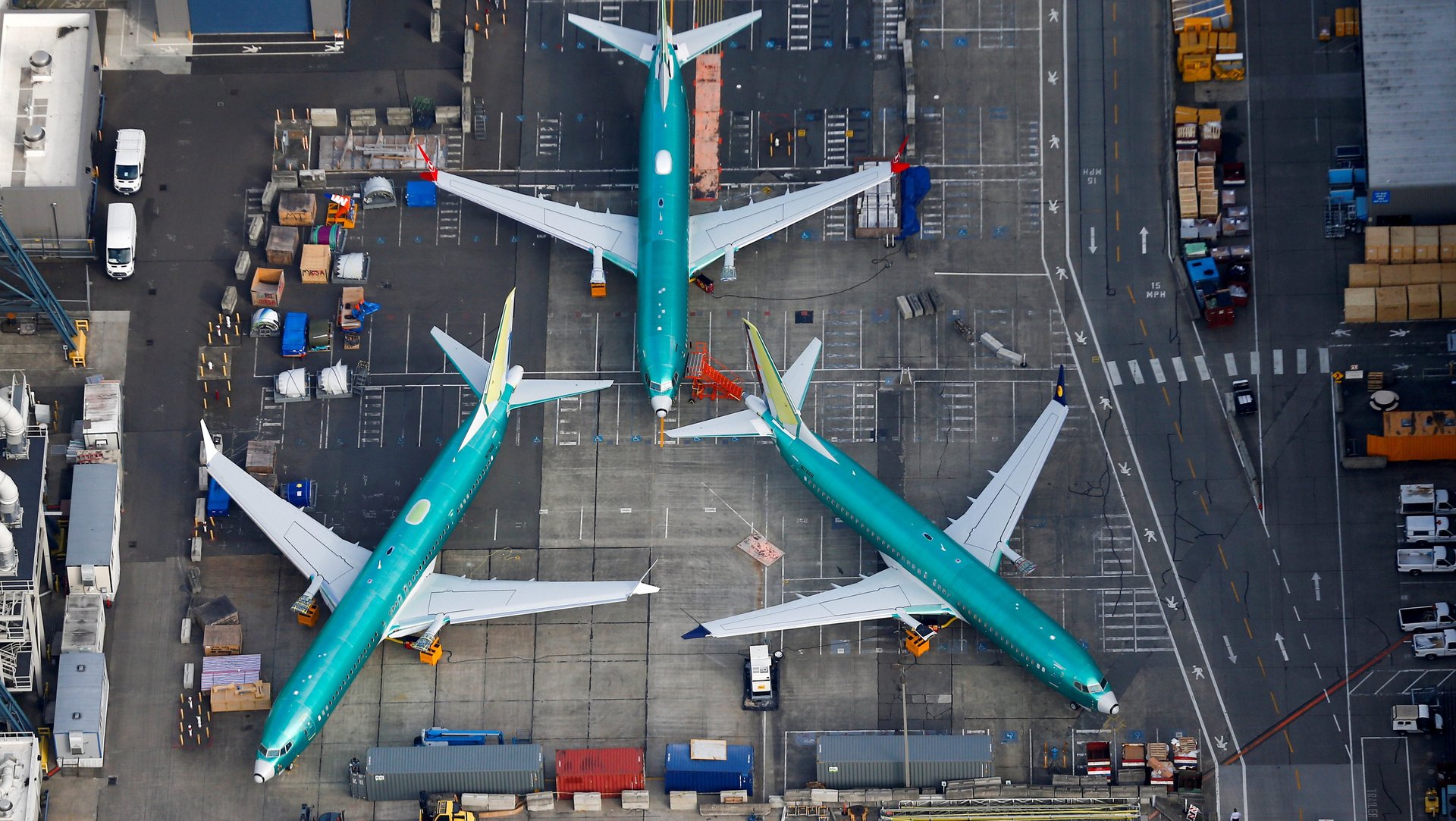The 737 Max has cost Boeing $9.2 billion and counting
More than 1,500 hours of safety tests later, the Boeing 737 Max is still as grounded as ever, with no real guidance on precisely when it will hit the skies again.


More than 1,500 hours of safety tests later, the Boeing 737 Max is still as grounded as ever, with no real guidance on precisely when it will hit the skies again.
For the airplane’s manufacturer, it’s all getting very, very, very expensive. In the third quarter of 2019, according to an earnings report today (Oct. 23), the plane’s continued grounding cost Boeing $900 million, bringing the total to $9.2 billion, since two fatal crashes between them killed nearly 350 people in March.
Boeing still managed to make $1.2 billion in profit in the quarter, largely due to an uptick in higher defense and services revenue. In the same quarter last year, it made $2.4 billion.
Max-related losses are rippling throughout the aviation sector: Boeing’s US airline customers estimate they’ve lost hundreds of millions since the plane was grounded at the start of the year, Earlier this month, the Southwest Airlines Pilots Association announce it would sue Boeing for $100 million in lost income. Boeing has already committed to paying out $5 billion after tax in compensation to airlines, though it’s not yet clear whether this will come in the form of discounts or other benefits. (Either way, the approximately 10,000 pilots in the union probably won’t see much of it.)
While the company was reluctant to issue much by way of detailed advisory today, it says it expects the plane to be back in the air before the end of the year. This is broadly in line with the estimates of US airlines: As of earlier this month, American Airlines said it expected the Max to return to service on January 16, while United Airlines had a more ambitious expected date of January 6. Southwest, meanwhile, has removed it from its schedules entirely until at least February.